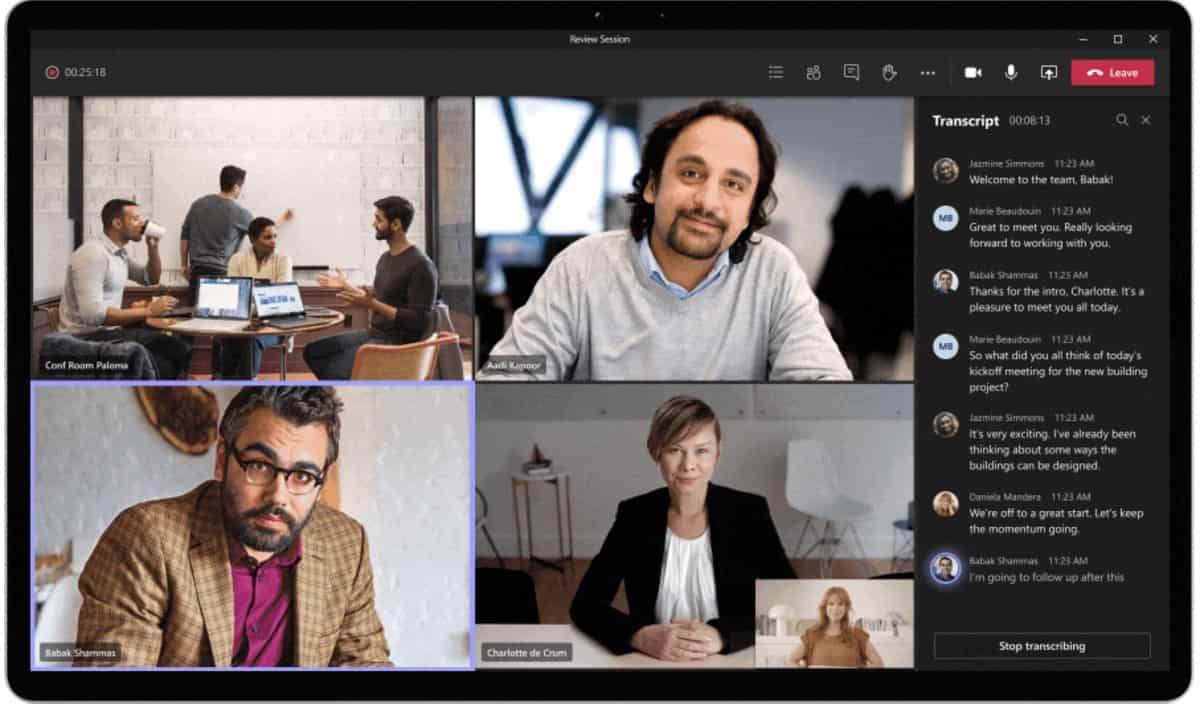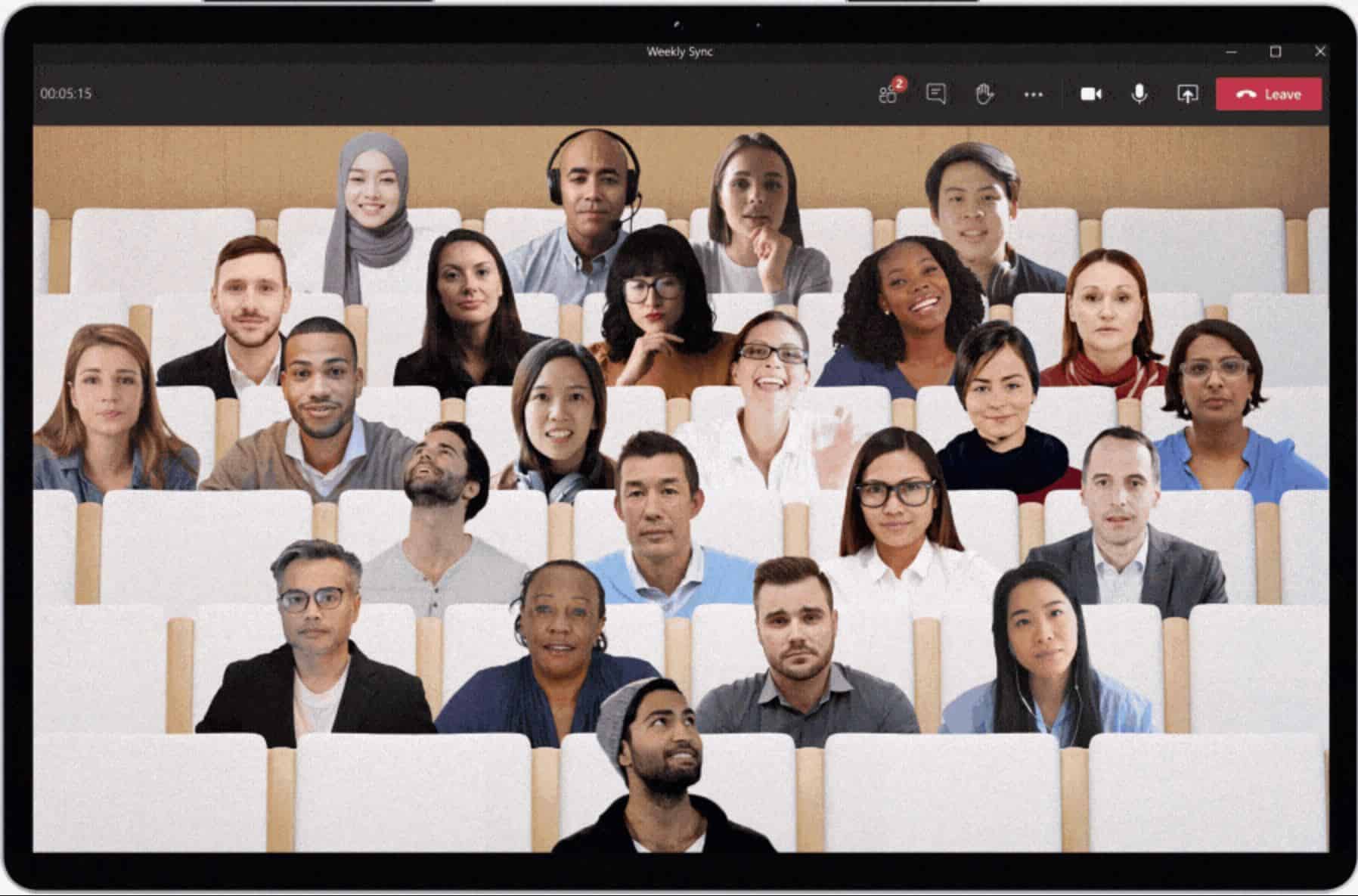Microsoft lists new inclusive features in Microsoft Teams
7 min. read
Updated on
Read our disclosure page to find out how can you help MSPoweruser sustain the editorial team Read more

There are numerous business, moral and legal reasons why companies should make their work practices inclusive, and Microsoft has been a leader in making sure their technology enables this.
At Ignite 2020 the companies showed off a number of new features for Microsoft Teams which makes the app and service easier to use for people with disabilities.
These include:
Meetings & Calling & Devices
Live captions and transcripts with speaker attribution available for 1:1 calls and meetings
With more important calls, meetings and events happening virtually, it’s critical to make sure everyone can understand the discussion and participate easily, including people with disabilities. Live captions and transcripts with speaker attribution can make meetings more inclusive of people who are hard of hearing or deaf, or have learning disabilities like dyslexia and prefer spoken content to be reinforced with text. You can now provide live captions and transcripts with speaker attribution for 1:1 calls, all the way through to interactive meetings of up to 1,000 participants. And when you need to expand the reach of your meeting even further, up to 20,000 participants can view the meeting and live captions to follow along. These features can be enabled via the control bar within the call or meeting window, and will be made available in the coming months. Speaker attribution for live captions in meetings is now Generally Available for Commercial customers.
New Together mode scenes
When managing our mental health and wellbeing, it’s important to make sure we feel connected and close to other people—whether family members, local communities or those we collaborate with at work. One of these new capabilities is Together mode, a view in Teams meetings that makes you feel like you’re sitting in the same room with your teammates, and makes it easier to pick up on the non-verbal cues that are so important to natural human interaction and connection. This week Microsoft announced new Together mode scenes, coming later this year, including various auditoriums, conference rooms and a coffee shop. Presenters will also be able to select a scene from the gallery as the default scene for all meeting attendees.
Chat & Collaboration
Wellbeing and productivity insights coming in Teams
The rise in remote and hybrid work during the ongoing pandemic is pushing people and organizations to work in new ways, introducing challenges as well as opportunities for a new normal. Microsoft’s research shows four clear challenges: after hours work is on the rise, boundaries between work and home are being eliminated, the rise of virtual collaboration and video meetings has led to a rise in stress levels, and people feel less connected to their colleagues when working remotely. To help us address some of these challenges so we can thrive and build resilience, Microsoft is bringing wellbeing and productivity insights to Microsoft Teams. From unwinding with Headspace on your virtual commute to discovering opportunities to prevent burnout, see how new insights for individuals, teams, and organizations can help.
Read more: Introducing insights in Teams to power wellbeing and productivity
Improved search experience
A?new?search experience?in Teams,?powered by Microsoft Search and?available by the end of 2020,?will make finding messages, people and files faster and more intuitive for everyone, including people with disabilities who use assistive technologies like screenreaders. A redesigned search results page provides better context and faster results, with AI-powered relevance based on the people and content you engage with most in Teams, and other Microsoft 365 services. Assistive technology users will be able to use the ‘Control F’ shortcut to access the search bar, initiate a search, and bring information right to their fingertips. It’s everything you love about Search in other Microsoft 365 applications, right in the Teams experience.
Read more: What’s new for Microsoft Search – Ignite 2020 Edition
Microsoft 365 Announcements
Play My Emails more broadly available
Play My Emails lets you listen and respond to what’s new in your inbox hands-free using Cortana, giving people with learning disabilities like dyslexia a way to consume written content that doesn’t require reading blocks of text. Play my Emails is already available in Outlook for iOS and Android in English in the United States, and will start rolling out in the coming months in English in Australia, Canada, the United Kingdom and India. With updates this month to Outlook for iOS in English in the United States, users can interact with their inbox via their headphones while their phone is in their pocket, initiate a call with the sender of an email to move the conversation forward in real time, play emails from a specific person, time or topic, and connect multiple eligible accounts—whether personal or professional—to the experience.
Voice commands in Outlook Mobile
Now you can use your voice to write emails, schedule meetings, and make calls, all from within Outlook mobile. Tap the microphone, and say “Email Adele that I’m running late”, “Schedule a meeting about Group Meditation with Megan”, or “Call Anna on Teams”. Outlook will find the relevant person, draft up a message, meeting or provide the option to start a call, and help you be more productive, all with voice. Voice capabilities like these provide people with learning disabilities like dyslexia, another way to write content, that doesn’t require typing. It also gives those with mobility disabilities another way to create content on the go.
Briefing Email from Cortana improvements
The Briefing Email is becoming generally available in September for Microsoft 365 Enterprise users with Exchange Online mailboxes in English. And with updates coming by the end of the year, the Briefing email will streamline meeting preparation. Actionable reminders will make it easy to add an agenda or a Teams link for an upcoming meeting if you forget, and to spot if a meeting is missing quorum. Integration with Microsoft To Do will make it seamless to follow up on a suggested task later. Microsoft is also working on bringing specialized insights for people managers to help boost your team’s productivity and wellbeing, such as prompts to schedule regular one-on-one time with your direct reports and reminders to follow up on key asks. The Briefing Email gives people with disabilities like memory loss or ADHD, more proactive assistance and tools to stay on top of their important tasks and relationships.
A reimagined Microsoft Stream
This week Microsoft announced a new vision for Microsoft Stream—to bring intelligent video creation, sharing, and viewing to all parts of Microsoft 365, while empowering users and administrators to manage video just as they would any other file. Part of this new vision is an enhanced playback experience that displays more accurate transcripts with speaker attribution for meeting recordings, among other exciting enhancements. These experiences will be made available over the coming year. Read more here.
Learn more and take action
To get started Microsoft recommends the following actions and resources:
1. Watch these Microsoft Ignite sessions to learn more about building an inclusive culture with support from Microsoft 365, and to get a closer look at these new inclusive features:
- Personal productivity insights in Microsoft 365 – enhancing employee wellbeing
- Driving Wellbeing and Inclusion with Microsoft Teams
- Empower your Diverse Firstline Workforce with Inclusive Technologies
- Sustaining Human Connection in a Virtual World with Technology
2. Complete the “Configure Microsoft Teams meeting and calling for Inclusion” training module to learn what you can do to configure Microsoft Teams in a way that maximizes inclusion of your diverse employees.
3. Find more Microsoft 365 Inclusive Workplace resources
Source: Microsoft










User forum
0 messages